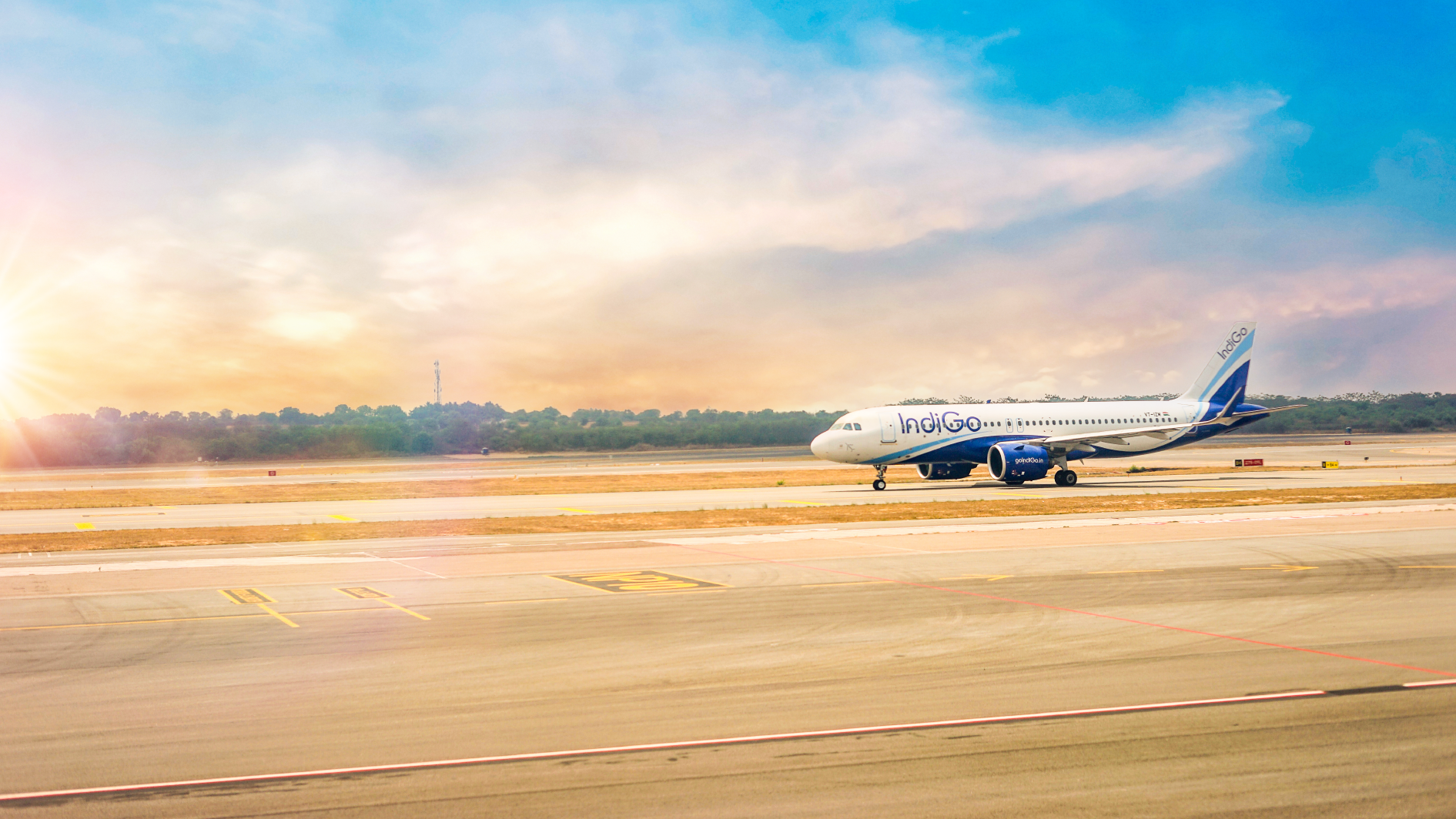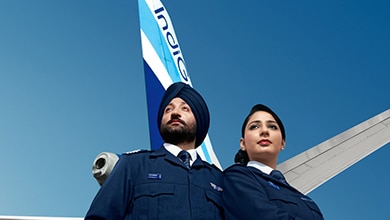Becoming a pilot is a dream for many and the IndiGo Cadet Pilot Program is one of the best ways to achieve it. Designed for aspiring aviators, this program offers a structured route to becoming a First Officer with IndiGo. However, the selection process is rigorous, ensuring only the most dedicated and capable candidates make it through.
In this guide, we will walk you through each step of the selection process – from choosing a Flight Training Organization (FTO) for pilot training program to signing your Letter of Intent (LOI) with IndiGo.
Step 1: Choosing a Flight Training Organization (FTO)
Before starting your journey, you need to select an approved Flight Training Organization (FTO) that offers the IndiGo Cadet Pilot Program. IndiGo collaborates with multiple training partners and flying schools in India, each offering world-class facilities and training programs.
Some of the prominent FTOs include:
- Garuda Aviation
- CAE
- FTE Jerez
- Skyborne Aviation
Each FTO has a slightly different approach, but the core training and selection process remain the same. It’s important to research and choose an FTO that aligns with your learning preferences, budget, and location preferences.
Once you’ve chosen an FTO, you’ll need to submit your application through their official website. If you meet the eligibility criteria, you’ll be invited to proceed with the selection process.
Step 2: Eligibility Verification & Undertaking Submission
Once your application is accepted, you’ll be required to submit eligibility documents to confirm you meet IndiGo’s requirements. The general eligibility criteria include:
- Age: Between 18-35 years
- Education: Minimum 10+2 with Physics and Mathematics (from a recognized board)
- Medical Fitness: Should meet DGCA Class 1 medical requirements
- Nationality: Indian passport holder
Along with these documents, candidates must sign an undertaking that confirms their commitment to completing the program.
Step 3: ADAPT Test – Assessing Your Pilot Aptitude
The ADAPT Test is a critical part of the selection process, designed to assess your cognitive skills, psychomotor abilities, and situational awareness. The test is conducted online or at a designated test center and typically includes:
Sections Covered in the ADAPT Test:
- Numerical Reasoning: Basic arithmetic, fractions, percentages, and problem-solving questions.
- Verbal Reasoning: Comprehension, logical reasoning, and critical thinking assessments.
- Spatial Awareness: Evaluates your ability to interpret and manipulate spatial information (useful for reading instruments and navigation).
- Multi-tasking & Memory: Tests your ability to handle multiple tasks simultaneously – a crucial skill for pilots.
- Situational Judgment: Presents real-life aviation scenarios to assess decision-making under pressure.
How to Prepare for the ADAPT Test:
- Practice numerical and verbal reasoning questions online.
- Solve spatial awareness exercises (puzzle games, 3D visualization apps).
- Use pilot aptitude test preparation tools available online.
- Improve multi-tasking with brain-training apps and memory exercises.
If you pass the ADAPT test, you’ll move on to the next phase – the Group Discussion (GD) round.
Step 4: Group Discussion (GD) Round
The Group Discussion (GD) round is designed to test your communication skills, teamwork, and ability to express ideas clearly.
What Happens in a GD?
- You will be placed in a group with other candidates.
- A topic (aviation-related or general) will be given.
- Each candidate must present their views and engage in the discussion professionally.
Tips to Ace the GD:
- Stay calm and confident while speaking.
- Listen actively and respect other opinions.
- Avoid interrupting or dominating the conversation.
- Use relevant facts and examples to support your points.
Candidates who perform well in the GD round proceed to the Personal Interview stage.
Step 5: Personal Interview
The Personal Interview (PI) is a one-on-one session with a panel of experts, including IndiGo representatives and aviation professionals. This is where your passion for aviation, technical knowledge, and personality are assessed for selection in the IndiGo pilot training program.
Common Interview Questions:
- Why do you want to become a pilot?
- What do you know about IndiGo and its fleet?
- How do you handle stressful situations?
- What do you understand about the responsibilities of a pilot?
- Do you have any prior flight training experience?
How to Prepare:
- Research IndiGo’s history, fleet, and operations.
- Brush up on basic aviation concepts (aerodynamics, navigation, aircraft systems).
- Practice answering behavioral questions using the STAR method (Situation, Task, Action, Result).
- Be honest, professional, and enthusiastic.
Once you successfully clear the interview, the final phase involves submitting essential documents.
Step 6: Post-Selection Documentation
Once selected, candidates need to complete the final set of documentation to be officially enrolled in the program. This includes:
-
Medical Examination (Class 1 Medicals)
- Conducted by DGCA-approved medical examiners.
- Includes vision tests, hearing tests, ECG, blood tests, and overall health evaluation.
-
Computer Number Application
- A Computer Number is a unique identifier issued by DGCA for all pilot trainees.
- Application is done through Pariksha DGCA portal.
- Requires submission of educational certificates and other identity proofs.
-
Additional Agreements & Documentation
- Submission of bond agreements and training commitment forms.
- Final verification of identity and qualification documents.
Once all documents are approved, the final milestone is the Letter of Intent (LOI) signing ceremony.
Step 7: LOI Signing – The Final Step Before Training
The Letter of Intent (LOI) Signing Ceremony is a significant milestone where candidates officially commit to the IndiGo Cadet Pilot Program.
During the LOI signing, candidates:
- Receive their official selection confirmation from IndiGo.
- Sign necessary agreements and training contracts.
- Meet fellow cadets, mentors, and industry professionals.
After signing the LOI, the journey officially begins as cadets embark on their pilot training at their chosen FTO. This phase includes rigorous ground school instruction, simulator sessions, and in-flight training designed to build both technical and practical skills. Flying schools in India offer world-class facilities and programs to help cadets achieve their commercial pilot licenses efficiently.
Final Thoughts
The IndiGo Cadet Pilot Program is one of the most structured and rewarding pathways to becoming a commercial pilot. It provides top-tier training and aligns perfectly with those pursuing a commercial pilot license course. While the selection process is challenging, it is designed to identify the best candidates who demonstrate technical aptitude, communication skills, and a strong passion for aviation.
If you are serious about pursuing a career as a pilot, preparation is key. From acing the ADAPT test to excelling in group discussions and interviews, every step requires dedication and effort.
So, are you ready to take off on your aviation journey? The sky is waiting!




